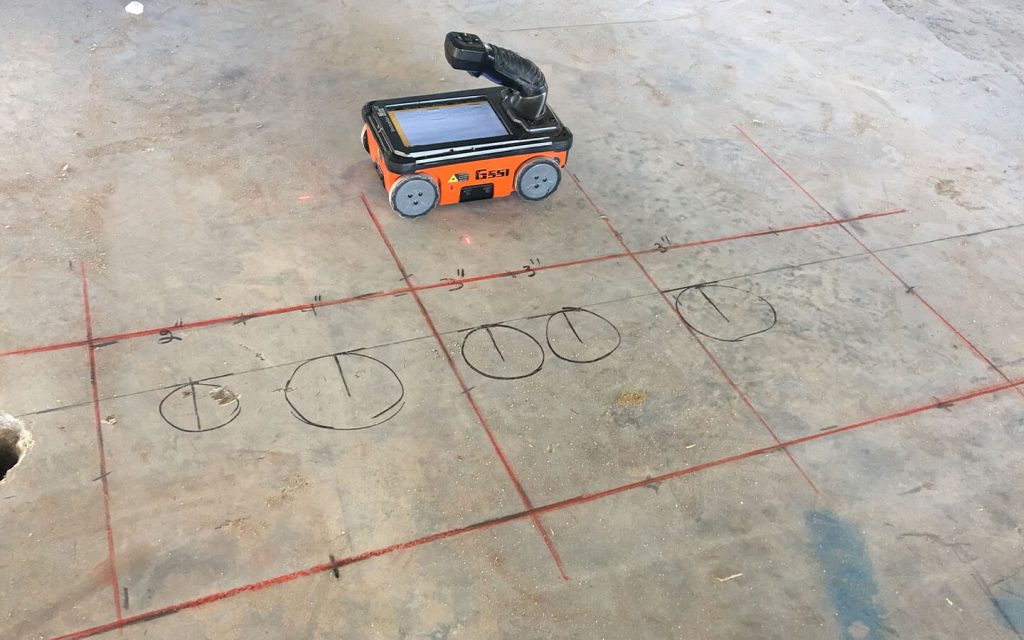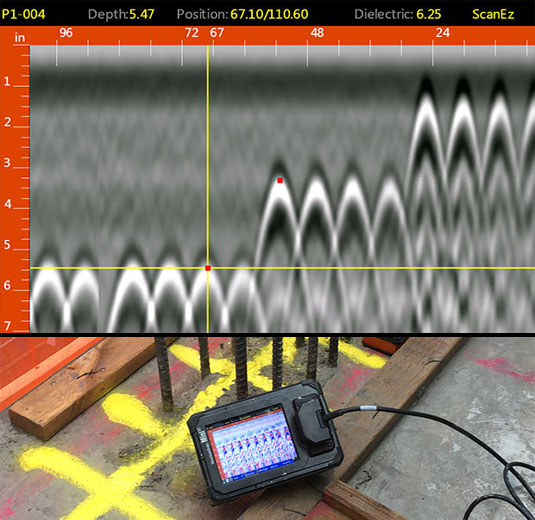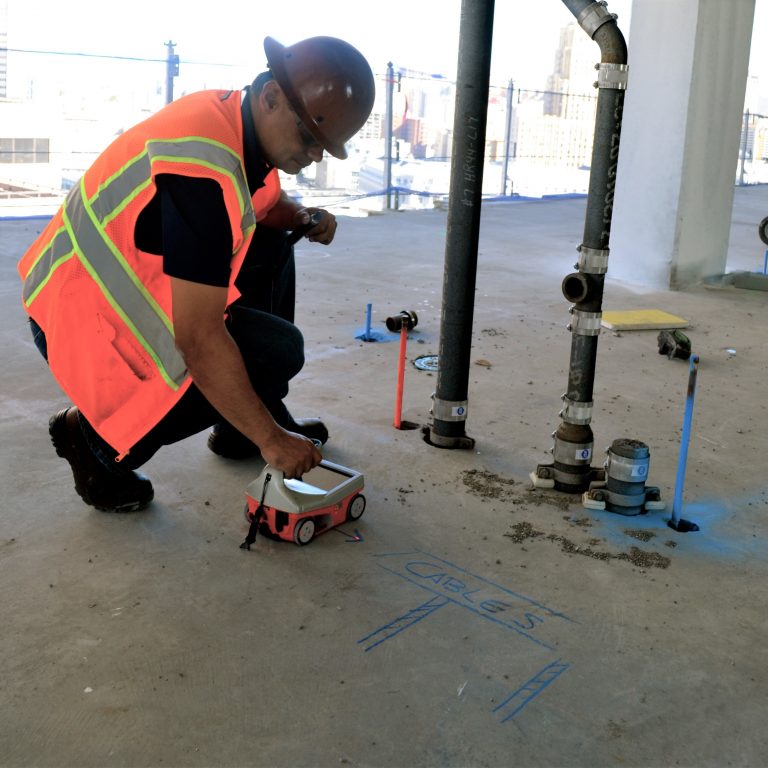The Ultimate RainierGPR Concrete Scanning Option Clarified
The Ultimate RainierGPR Concrete Scanning Option Clarified
Blog Article
Harness the Strategic Side of Concrete Scanning for Unparalleled Task Success and Top Quality Assurance
In the world of modern construction and framework growth, the application of concrete scanning technology has actually arised as a pivotal tool for making sure project success and preserving top quality requirements. This cutting-edge method offers a tactical edge by offering important understandings right into the structural honesty of concrete elements, thereby allowing informed decision-making throughout the project lifecycle. By diving into the midsts of concrete make-ups and revealing concealed abnormalities, stakeholders can proactively resolve potential risks, simplify operations, and enhance resource allocation. The real power of concrete scanning lies not just in its ability to boost task end results however additionally in its capacity to transform standard techniques, setting a new standard for accuracy and performance in the construction industry.
The Relevance of Concrete Scanning
Concrete scanning is a vital action in building jobs to ensure the security and stability of structures. By using different scanning modern technologies such as Ground Permeating Radar (GPR) and electro-magnetic induction, construction groups can non-destructively examine the subsurface of concrete structures to recognize possible risks like rebar, channels, or post-tension cables. This info is essential for project professionals, supervisors, and engineers to make enlightened decisions and prevent expensive errors during the construction process.
One of the primary reasons that concrete scanning is so crucial is its capability to avoid mishaps and injuries on the construction site. Inadvertently cutting with a live electrical conduit or destructive post-tension cords can have tragic repercussions, not just in terms of security but also in regards to task hold-ups and financial implications. By conducting complete concrete scanning before any drilling, reducing, or coring tasks, building and construction groups can mitigate risks and develop a much safer working atmosphere for everyone entailed.
Along with security factors to consider, concrete scanning likewise plays a vital duty in guaranteeing the long-term durability and quality of the structure. By spotting any abnormalities or flaws hidden under the surface, such as gaps or delamination, early intervention can be applied to address these concerns before they escalate right into even more substantial issues. Eventually, investing in concrete scanning is a positive step that can conserve time, money, and sources in the future, while likewise maintaining the greatest requirements of building excellence.
Advanced Innovation for Exact Results

Additionally, 3D scanning modern technologies supply a detailed view of the subsurface setting by producing in-depth electronic versions. These versions give beneficial understandings right into the structural honesty of concrete aspects and help in determining potential weaknesses before they escalate into major issues. By incorporating these innovative technologies into concrete scanning techniques, get redirected here building teams can enhance operations, decrease project hold-ups, and ensure the general quality and success of the job. The accuracy and effectiveness offered by these devices contribute considerably to the job's success by promoting notified decision-making and enhancing quality guarantee actions.
Enhancing Task Efficiency and Timelines

Additionally, concrete scanning makes it possible for groups to determine structural weaknesses and potential threats early on, allowing for punctual removal and stopping mishaps that visit the site can thwart task timelines. The real-time information offered by scanning devices assists in informed decision-making, causing smoother control amongst different trades and stakeholders. This boosted cooperation decreases conflicts, improves performance, and eventually speeds up job shipment.
Furthermore, by proactively addressing issues via concrete scanning, building and construction groups can abide by schedules a lot more efficiently, lower downtime, and maximize resource allocation. The capacity to discover covert obstacles and verify architectural integrity effectively adds to overall task performance and timelines, ensuring successful end results and client complete satisfaction.
Ensuring Security and Threat Mitigation

Threat mitigation strategies can be boosted through the thorough info given by concrete scanning, allowing project teams to make enlightened decisions that reduce the possibility of unanticipated occurrences. In addition, by precisely drawing up subsurface conditions, contractors can prevent pricey rework, delays, and damages to existing structures, go additionally adding to general task security and success. Applying concrete scanning as a routine method not just guarantees a more secure workplace yet also imparts self-confidence in stakeholders relating to the project's commitment to top quality and risk administration.
Quality Control Via Concrete Scanning
Concrete scanning plays a critical duty in supporting quality control criteria within construction jobs. By using innovative scanning technologies such as Ground Permeating Radar (GPR) and Concrete X-ray, job supervisors and designers can make certain the integrity and quality of concrete structures. With concrete scanning, prospective issues, such as voids, cracks, or reinforcing bar congestion, can be identified non-destructively, allowing for timely interventions to maintain the structural stability of the job.
Quality guarantee via concrete scanning not just aids in identifying existing issues but likewise allows positive actions to prevent future issues that might jeopardize the security and long life of the framework. By conducting detailed scans at vital phases of construction, groups can validate the accuracy of architectural strategies, validate the positioning of crucial aspects, and address any type of variances immediately. This aggressive technique lessens rework, minimizes costly hold-ups, and inevitably results in the shipment of premium, resilient frameworks that satisfy or go beyond market standards.
Verdict
In conclusion, concrete scanning plays a crucial function in ensuring job success, effectiveness, quality, and safety and security guarantee. The tactical side supplied by concrete scanning permits for positive risk reduction and improves total task monitoring.
In the world of modern-day building and construction and infrastructure development, the utilization of concrete scanning technology has actually arised as a crucial device for making certain task success and keeping top quality requirements. By integrating these sophisticated technologies into concrete scanning practices, building and construction groups can enhance process, decrease project hold-ups, and make certain the total top quality and success of the job.Provided the necessary nature of task effectiveness and timelines in construction management, the emphasis now shifts in the direction of making sure safety and mitigating threats within the task atmosphere.Concrete scanning plays a pivotal duty in promoting top quality assurance standards within building and construction jobs. By utilizing advanced scanning modern technologies such as Ground Penetrating Radar (GPR) and Concrete X-ray, project supervisors and engineers can make sure the integrity and top quality of concrete structures.
Report this page